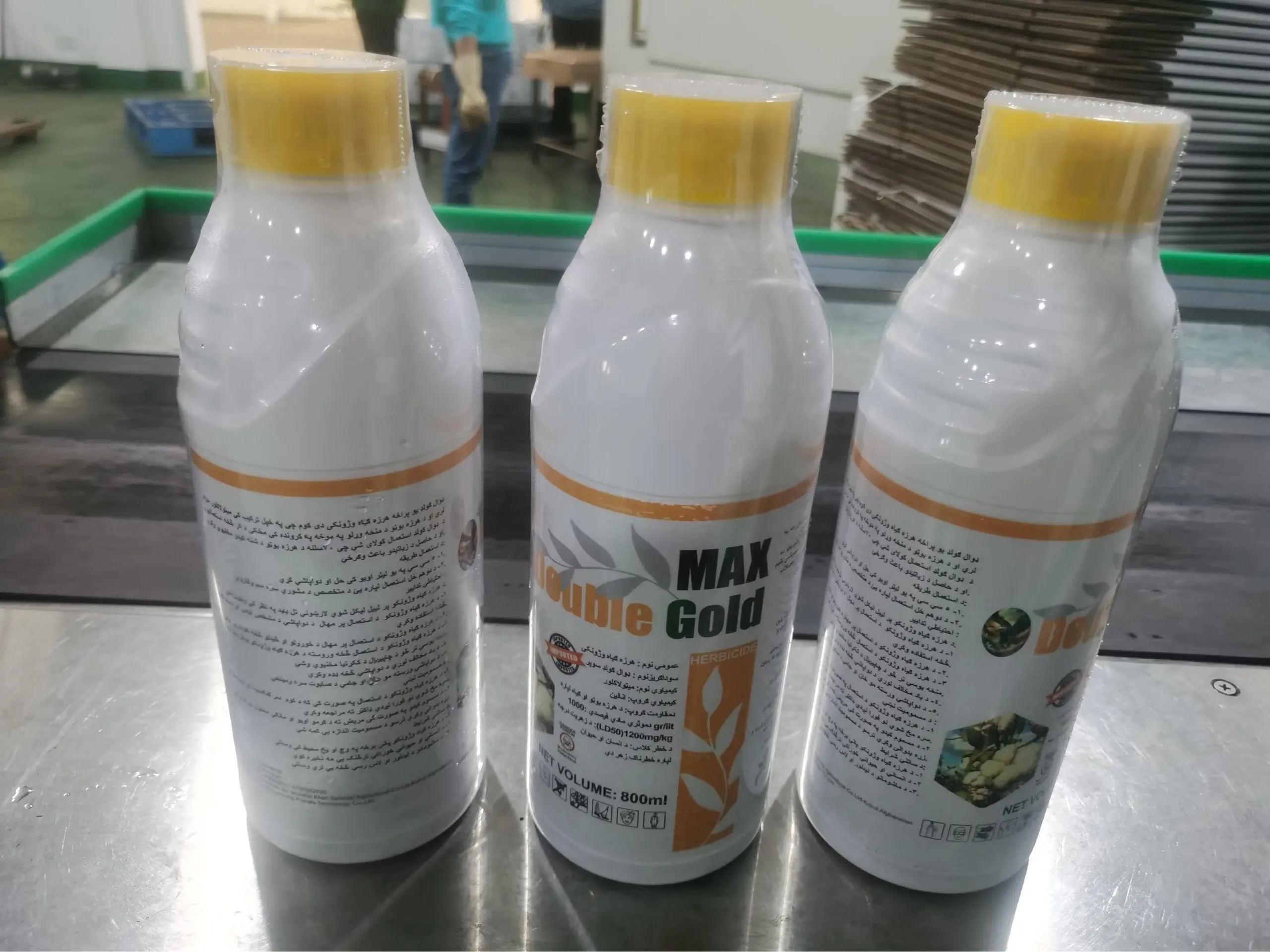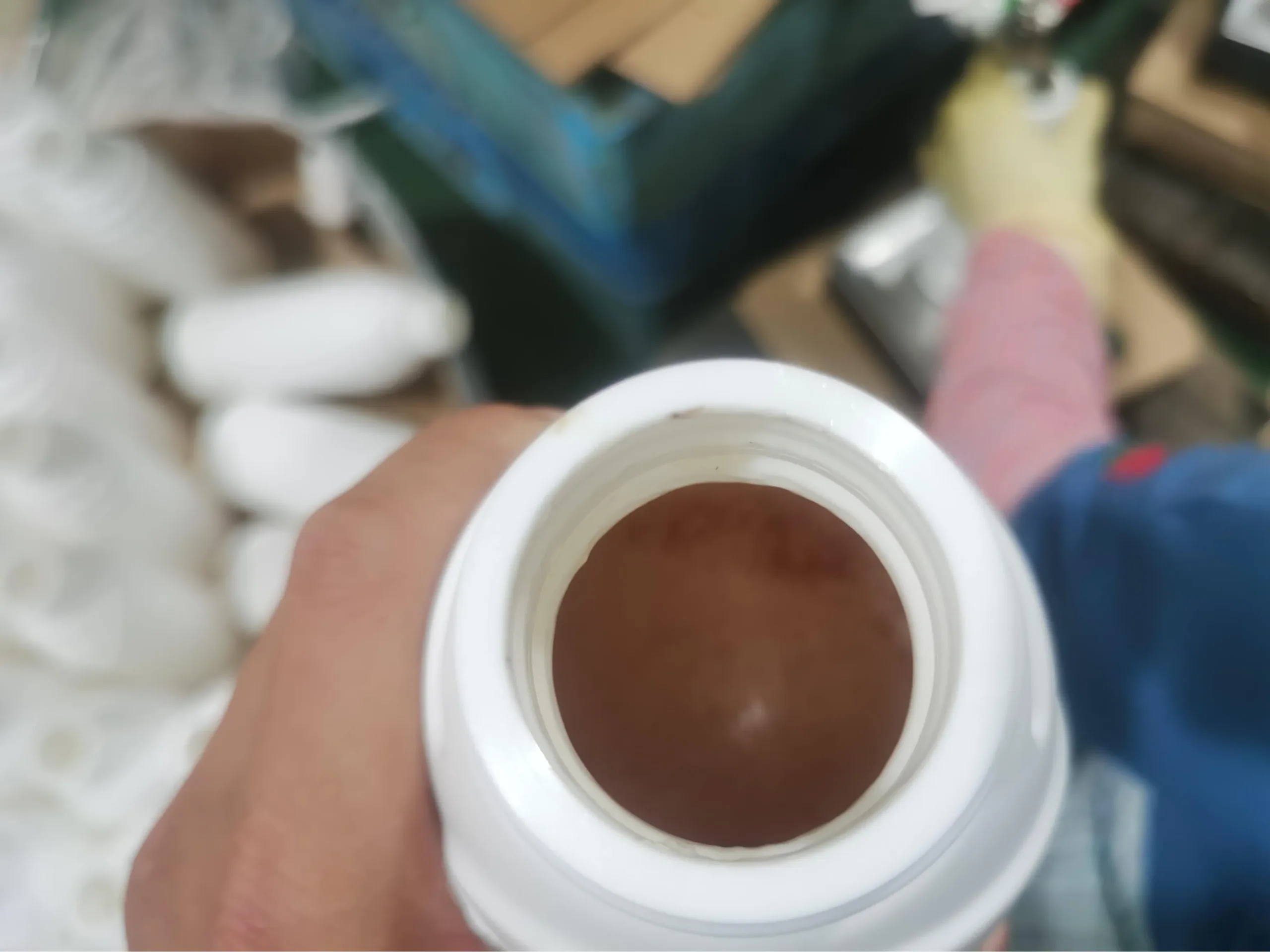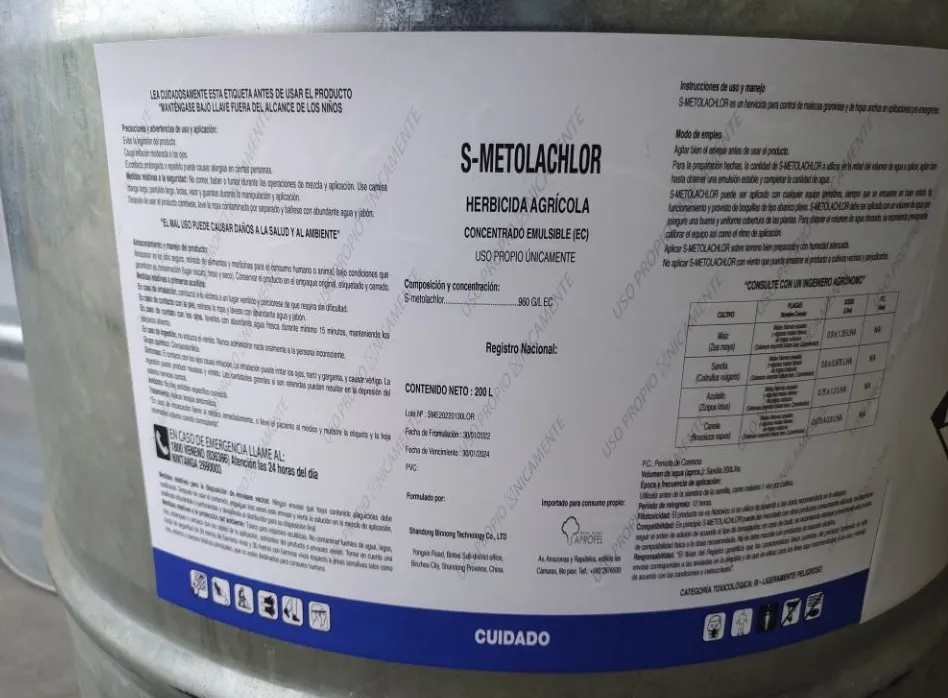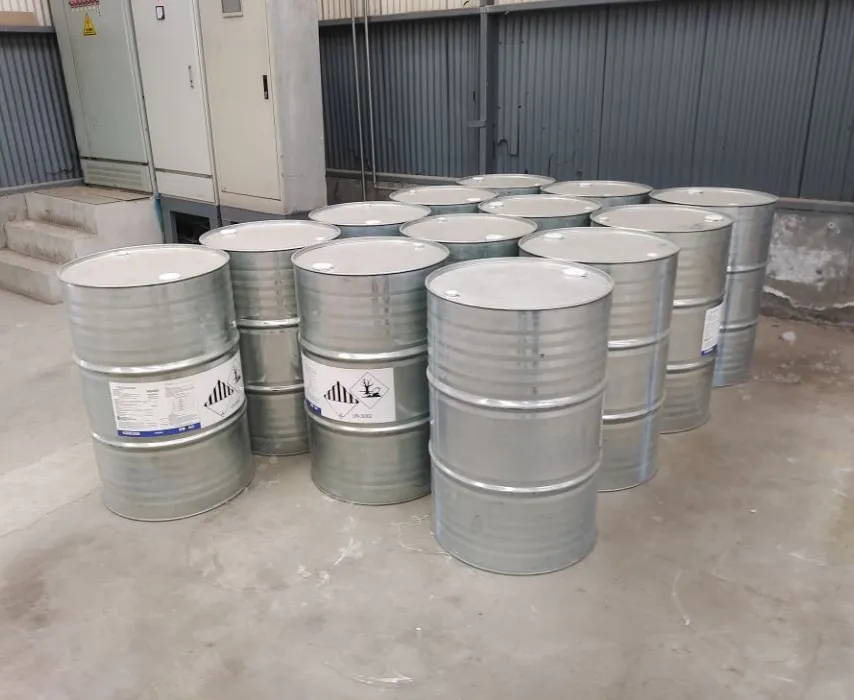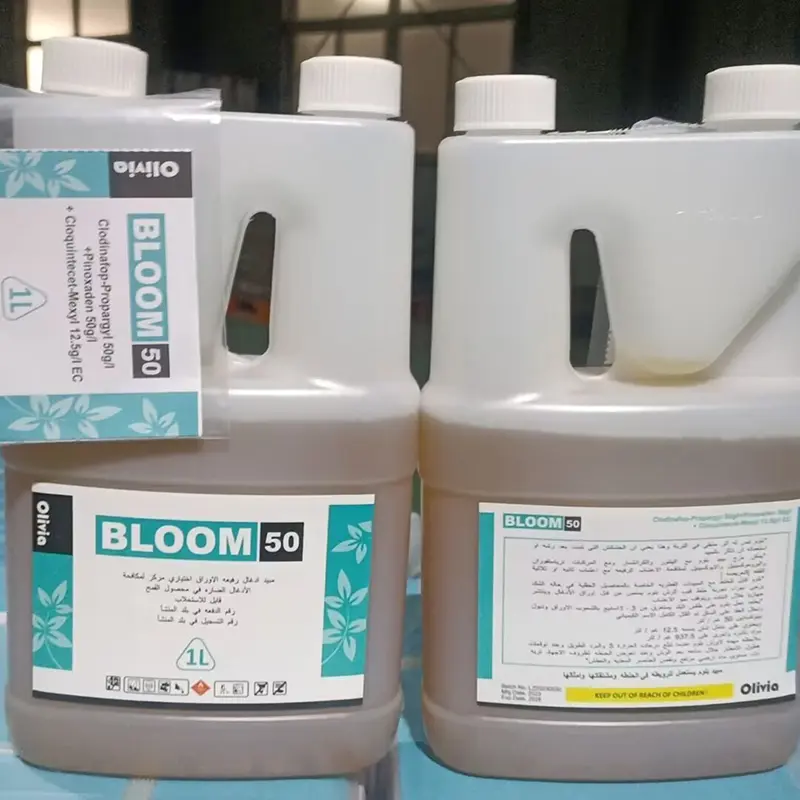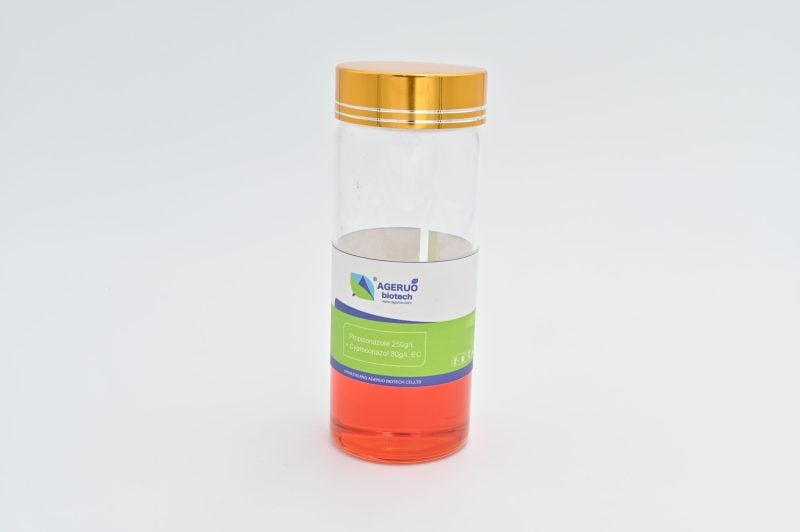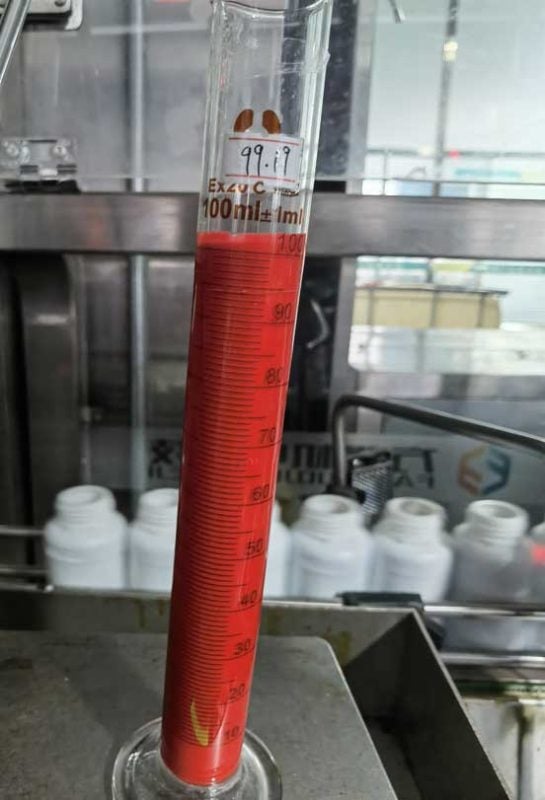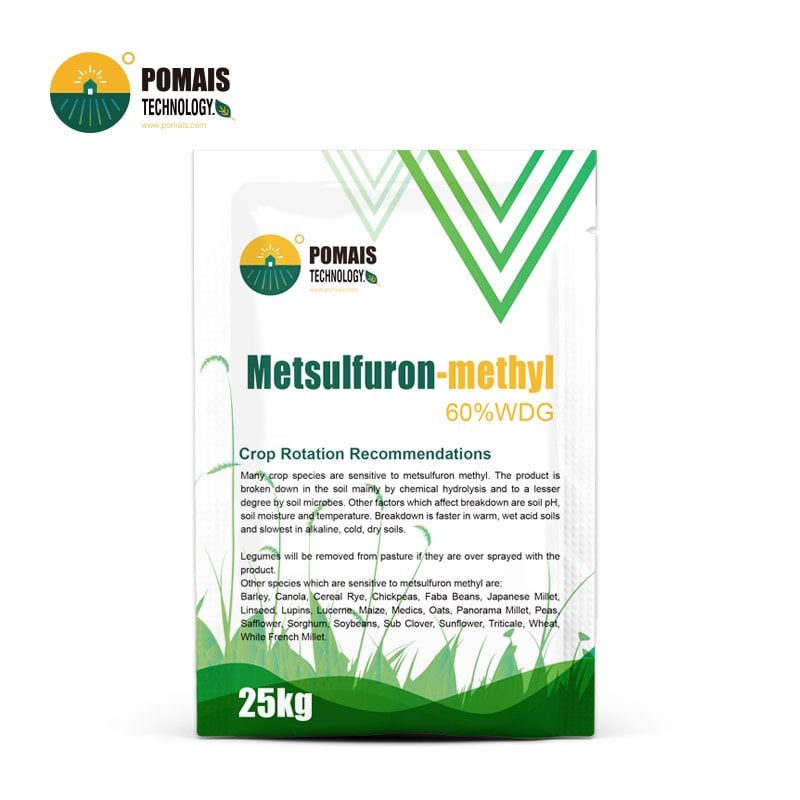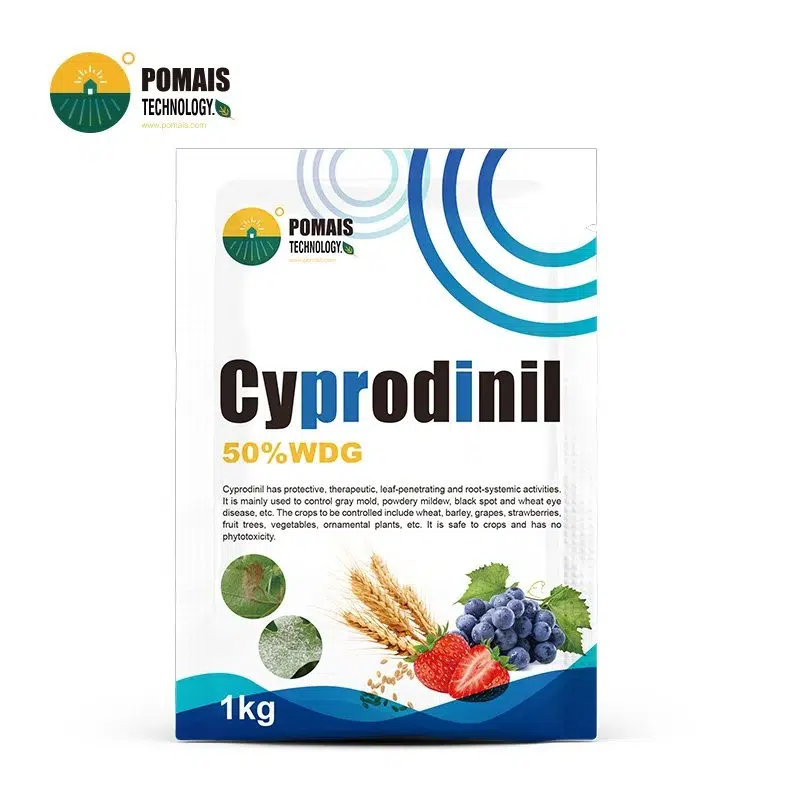S-metolachlor 960 g/l EC Herbicide
Reliable Weed Control for Diverse Crops
If you’re seeking a powerful, cost-effective herbicide to control a broad range of weeds in crops like corn, soybeans, and rice, S-metolachlor 960 g/l EC is the ideal choice. This S-metolachlor herbicide provides fast-acting, pre-emergence weed control, ensuring effective suppression of both grass and broadleaf weeds.
With our comprehensive S-metolachlor products range, including generic S-metolachlor formulations, you have access to flexible, high-quality options designed to meet diverse crop needs. Our consistent supply and expert support ensure you get the best out of every application, helping your customers achieve higher yields and healthier crops.
- Designed for Professional Buyers & Bulk Orders
- This product is available for business purchase and large-scale distribution.
- We support custom packaging, labeling, and formulation to meet your market needs.
- Let’s build your brand together.

About S-metolachlor 960 g/l EC Herbicide
About S-metolachlor 960 g/l EC Herbicide
| Product Name | S-metolachlor 960 g/L EC |
| Active Ingredient | S-metolachlor (selective chloroacetamide herbicide) |
| CAS Number | 87392-12-9 |
| Chemical Formula | C15H22ClNO2 |
| Formulation Type | Emulsifiable Concentrate (EC) |
| Concentration | 960 g/L |
| Mode of Action | Systemic pre-emergence herbicide; inhibits lipid synthesis, stopping weed seed germination and shoot/root growth |
| Target Weeds | Annual grasses (barnyardgrass, foxtail, wild oats), broadleaf weeds (pigweed, lambsquarters, morning glory, etc.) |
| Suitable Crops | Corn, soybeans, rice, wheat, vegetables, other field crops |
| Application Timing | Pre-emergence; forms protective soil barrier to prevent weed establishment |
| Formulation Stability | Premium EC – excellent tank-mix compatibility, stable in tropical/subtropical climates, long shelf life (2 years) |
| Packaging Options | 100ml–500ml bottles, 1L–20L drums, bulk IBCs; robust export-grade cartons |
| OEM & Private Label | Custom multilingual labels, private branding, anti-counterfeit elements |
| Regulatory Assistance | COA, MSDS, TDS, GLP residue reports, local registration dossiers |
| Production Standards | ISO & GMP-certified factory, batch traceability, strict QC from raw material to final shipment |
| Flexible MOQ & Logistics | Small trial orders to bulk containers; stable lead times, global export experience in Asia, Africa, MENA, S. America |
| Technical Support | Tank mix & dosage guidance, resistance management, best practice IPM integration |
| Field Use Scenarios | Strong performance in multiple cropping systems; integrated weed management partner |
S-metolachlor 960 g/l EC Herbicide – Reliable Weed Control for Diverse Crops
S-metolachlor 960 g/l EC is a premium, selective herbicide formulated to provide excellent pre-emergence control of a wide variety of grass and broadleaf weeds in crops such as corn, soybeans, rice, and other field crops. The 960 g/l EC (emulsifiable concentrate) formulation is designed for easy dilution, allowing for uniform application across the field, ensuring thorough coverage and effective weed control.
The EC formulation offers exceptional stability, even under varying environmental conditions, providing growers with reliable and long-lasting weed control throughout the growing season. As a systemic herbicide, S-metolachlor works by preventing the germination of weed seeds, keeping fields clean and giving crops a strong, competitive advantage from the start.
At POMAIS, we ensure consistent product quality through strict quality control measures and an efficient production process, providing you with a herbicide that delivers proven results, field after field.
Mode of Action
S-metolachlor 960 g/l EC works by inhibiting the growth of weeds during their early stages of development. Once applied, this S-metolachlor herbicide is absorbed by the plant roots and shoots, interfering with the formation of lipids needed for cell membrane development. This disruption halts the growth of the plant and prevents the weed from successfully germinating or establishing itself in the soil.
The S-metolachlor active ingredient specifically targets grasses and broadleaf weeds, providing excellent control in crops such as corn, soybeans, and rice. As a pre-emergence herbicide, it creates a protective barrier in the soil, killing weed seeds before they even have a chance to sprout, ensuring a cleaner, healthier crop field.
This systemic mode of action ensures long-lasting weed control, reducing the need for multiple applications throughout the season and helping your customers lower their operational costs and labor time.
Target Crops & Typical Uses
S-metolachlor 960 g/l EC is designed to deliver effective and reliable pre-emergence weed control across a wide range of field crops. Below are the primary crops and typical weed species that this powerful herbicide can help control:
1. Corn (Zea mays)
- Weed Control: Controls key weeds like large crabgrass, pigweed, foxtail, and velvetleaf.
- Application: Apply S-metolachlor before weed emergence, providing a robust weed barrier for early crop development.
2. Soybeans (Glycine max)
- Weed Control: Excellent at preventing grass weeds like barnyardgrass and bromegrass, as well as broadleaf weeds like morning glory and lambsquarters.
- Application: Use S-metolachlor 960 g/l EC during planting or early post-planting for optimal results.
3. Rice (Oryza sativa)
- Weed Control: Provides control of submerged weeds and grasses such as ducksalad, barnyardgrass, and watergrass.
- Application: Ideal for pre-emergence application in rice paddies, before weeds have a chance to germinate and damage rice crops.
4. Other Field Crops
- Weed Control: Effective on a range of other crops, including cotton, peanuts, and sunflower, where early-season weed control is critical for crop health.
- Application: S-metolachlor can be applied to many crops as part of an integrated weed management program, ensuring clean fields and preventing competition from weeds.
5. Vegetables (Cabbage, Tomatoes, etc.)
- Weed Control: Effective on broadleaf and grassy weeds like purslane, sow thistle, and crabgrass.
- Application: For vegetable crops, S-metolachlor 960 g/l EC should be applied pre-emergence to ensure that weeds don’t interfere with crop establishment.
6. Wheat & Other Cereal Crops
- Weed Control: Targets key weeds like wild oats, ryegrass, and cleavers, helping ensure higher yields.
- Application: Pre-emergence application, tailored to protect crops during the critical early growth stages.
Target Weeds
- Annual Grasses:
- Large Crabgrass (Digitaria sanguinalis)
- Barnyardgrass (Echinochloa crus-galli)
- Foxtail (Setaria spp.)
- Wild Oats (Avena fatua)
- Ryegrass (Lolium spp.)
- Broadleaf Weeds:
- Pigweed (Amaranthus spp.)
- Lambsquarters (Chenopodium album)
- Morning Glory (Ipomoea spp.)
- Velvetleaf (Abutilon theophrasti)
- Sow Thistle (Sonchus oleraceus)
- Purslane (Portulaca oleracea)
- Perennial Weeds:
- Canada Thistle (Cirsium arvense)
- Dandelion (Taraxacum officinale)
- Aquatic Weeds (for Rice):
- Watergrass (Hydrilla verticillata)
- Duckweed (Lemna spp.)
How This Helps Your Customers
By applying S-metolachlor 960 g/l EC, your customers can confidently control both annual grasses and broadleaf weeds in key crops like corn, soybeans, and rice, ultimately improving their yield and minimizing weed competition. This flexibility across different crops and weed types makes S-metolachlor 960 g/l EC an essential part of any integrated weed management (IWM) system.
Recommended Dosage & Application
To achieve optimal weed control with S-metolachlor 960 g/l EC, it’s essential to follow the recommended dosage and application methods tailored to the crop and local environmental conditions. Below are the general guidelines for effective use:
| Crop | Recommended Dosage (L/ha) | Application Method |
| Corn | 1.0-1.5 | Pre-emergence after planting, before weed emergence |
| Soybeans | 0.75-1.2 | Pre-emergence after planting, before or just after first weed emergence |
| Rice | 1.0-1.2 | In flooded fields, before weed emergence |
| Vegetables | 0.6-1.0 | Pre-emergence over soil/seedbed for weed suppression |
| Wheat & Other Cereal Crops | 1.0-1.5 | Pre-emergence after sowing, before weeds begin to emerge |
Benefits & Grower Value
By choosing S-metolachlor 960 g/l EC, you’re offering your customers a highly effective and reliable solution for weed control in their crops. This herbicide provides several key benefits that directly enhance grower profitability and field performance:
1. Effective Weed Control
S-metolachlor 960 g/l EC delivers superior pre-emergence control of both annual grasses and broadleaf weeds, including persistent and tough species like barnyardgrass and pigweed. This ensures that your customers’ crops start strong, with reduced competition from weeds during the critical early growth stages.
2. Long-lasting Residual Effect
Thanks to its 960 g/l EC formulation, this herbicide provides long-lasting residual control, reducing the need for repeated applications throughout the season. This minimizes labor costs and maximizes field efficiency, giving growers more time to focus on other critical farm operations.
3. Cost-Effective Weed Management
With S-metolachlor 960 g/l EC, your customers can reduce their input costs. By effectively managing weeds early on, they prevent the need for expensive post-emergence herbicides, reducing both chemical costs and environmental impact.
4. Enhanced Crop Yields
Weed-free fields allow crops to grow without competition for vital nutrients, water, and sunlight, leading to improved crop quality and higher yields. By reducing weed pressure, S-metolachlor helps maintain healthy crops throughout their development, ensuring better marketable produce.
5. Sustainable Weed Management
As a key part of an integrated weed management (IWM) program, S-metolachlor helps delay resistance development in weed populations, ensuring long-term effectiveness and sustainable farming practices. Your customers will appreciate how this product helps them maintain weed control over multiple seasons, contributing to their overall farm sustainability.
By providing S-metolachlor 960 g/l EC, you’re giving your customers a proven tool to increase their farm productivity, reduce costs, and protect the environment, all while ensuring a healthy and profitable harvest.
Formulation Stability & Packaging Options
One of the key advantages of S-metolachlor 960 g/l EC is its excellent formulation stability, ensuring that your customers can rely on consistent performance throughout the season. This S-metolachlor herbicide is formulated as an emulsifiable concentrate (EC), which allows for easy dilution in water and uniform distribution across the field. Its EC formulation also ensures strong adhesion to soil particles, providing a protective barrier that lasts longer and minimizes the chance of weed regrowth.
Formulation Stability
The 960 g/l EC formulation is designed for optimal storage and shelf life, even in high-temperature environments. S-metolachlor 960 g/l EC can be stored for extended periods without significant degradation, ensuring that the product remains effective when it’s needed most. This makes it especially reliable for markets in tropical and subtropical regions, where high temperatures can be a challenge for some herbicides.
The product’s stability ensures a uniform emulsion, with minimal risk of separation during storage. This leads to a consistent application rate, maximizing the efficacy of each use and reducing the risk of under-application or wastage.
Packaging Options
To meet the diverse needs of your customers, we offer flexible packaging options for S-metolachlor 960 g/l EC, from small retail bottles to large bulk containers:
- 100ml and 250ml Bottles: Ideal for small-scale or retail customers looking to manage weeds in smaller plots.
- 1L, 5L, 20L Drums: Perfect for large-scale growers who need a bulk supply for extensive fields.
- Bulk Shipping: Available for distributors and wholesalers looking to supply larger quantities for widespread agricultural operations.
OEM & Private Label Services
For distributors and brand owners, we provide OEM and private label services to ensure that your brand stands out in the market. Whether you need multilingual labels or customized packaging to comply with local regulations, we offer flexible solutions that help you create a unique product line. With our tailored labeling options, you can confidently provide your customers with a trusted, branded S-metolachlor herbicide that meets their specific needs.
Tank Mix Compatibility & Resistance Management
S-metolachlor 960 g/l EC is highly compatible with a wide range of herbicides, fungicides, and foliar fertilizers, making it a versatile addition to any grower’s crop protection program. For optimal performance, we recommend tank mixing with products from different herbicide groups to enhance the spectrum of weed control and improve field efficiency.
Tank Mix Compatibility
Before mixing S-metolachlor herbicide with other pesticides or fertilizers, always conduct a jar test to ensure compatibility. While S-metolachlor 960 g/l EC mixes well with many commonly used herbicides like glyphosate or atrazine, it is crucial to confirm there is no risk of precipitation, clogging, or phytotoxicity when combining with other products.
By mixing S-metolachlor with complementary herbicides, you can create a more comprehensive weed control solution that tackles multiple weed species in one application. This can help reduce the number of applications needed during the growing season, saving your customers both time and money.
Resistance Management
Weed resistance is a growing concern for farmers, especially with the widespread use of herbicides. S-metolachlor is no exception, and while it provides excellent control of annual grasses and broadleaf weeds, it’s important to use it as part of a broader resistance management strategy.
To avoid the development of resistance, we strongly recommend rotating S-metolachlor 960 g/l EC with herbicides from different mode-of-action groups, such as glyphosate, atrazine, or dicamba. Implementing a diverse herbicide program will help ensure that pests do not develop resistance to a single product, ensuring long-term effectiveness.
In addition to rotating herbicides, encourage your customers to adopt cultural practices such as crop rotation and residual herbicide application to further reduce the likelihood of weed resistance.
By promoting these best practices, you help your customers maintain effective weed control, reduce their reliance on any single herbicide, and maximize their long-term crop protection.
Safety Measures & Environmental Impact
Ensuring safe use and protecting the environment are top priorities when applying S-metolachlor 960 g/l EC. Here are the critical safety measures and environmental considerations that will help your customers maximize the benefits of this herbicide while minimizing potential risks.
Safety Measures for Users
When handling S-metolachlor herbicide, it is essential for your customers to use the recommended Personal Protective Equipment (PPE). This includes:
- Gloves, protective clothing, and eye protection when mixing and applying the herbicide.
- Respiratory protection is recommended if there is a risk of inhaling spray mist.
- Avoid spraying during windy conditions to reduce the risk of drift and potential exposure to non-target areas or nearby crops.
Ensure your customers follow all local safety guidelines and wear PPE to prevent any direct contact with the product, especially when mixing or spraying.
Pre-Harvest Interval (PHI) & Residue Management
To meet food safety and export market requirements, it’s critical to adhere to the Pre-Harvest Interval (PHI) for S-metolachlor 960 g/l EC. The recommended PHI for most crops is typically 30-60 days, depending on the crop type and local regulations. Always ensure that your customers follow the PHI to allow for proper dissipation of residues and to meet Maximum Residue Limits (MRLs) for export markets.
It’s also crucial to follow proper spray equipment cleaning procedures after each use to avoid contamination in subsequent applications, particularly when switching to other herbicides or chemicals.
Environmental Impact
S-metolachlor 960 g/l EC is designed with minimal environmental impact when applied according to label instructions. However, to protect non-target organisms and ecosystems, advise your customers to avoid application near water bodies, wetlands, or in areas prone to runoff.
While S-metolachlor has low toxicity to most wildlife, it is important to keep the product away from water sources to prevent contamination of aquatic ecosystems. Remind growers to refrain from using the product during heavy rainfall or irrigation events to avoid runoff.
For soil health, S-metolachlor remains effective for long periods, but it is crucial to avoid overuse in a single growing season to maintain soil biodiversity and ecosystem health.
Waste Disposal
Proper disposal of containers and leftover herbicide is important to avoid environmental contamination. Ensure that your customers rinse empty containers thoroughly and dispose of them in accordance with local agricultural waste management regulations.
Field Use Scenarios
To better illustrate the versatility and effectiveness of S-metolachlor 960 g/l EC, let’s look at some real-world applications. By sharing these field use scenarios, you can help your customers understand exactly how and when to apply this powerful herbicide for optimal results.
1. Corn (Zea mays)
- Weed Control Challenge: Corn fields are often heavily infested with barnyardgrass and pigweed, which can severely limit crop growth and yield.
- Application: S-metolachlor 960 g/l EC is applied pre-emergence after planting, creating a protective barrier that prevents these weeds from germinating. This application ensures that the corn has a clear growth space during its critical early stages, giving it a strong start without the competition from weeds.
- Outcome: Growers experience higher yields, healthier plants, and reduced need for post-emergence herbicide applications.
2. Soybeans (Glycine max)
- Weed Control Challenge: Soybean fields often struggle with foxtail and morning glory, which compete with crops for nutrients, sunlight, and space.
- Application: Apply S-metolachlor 960 g/l EC pre-emergence, right after sowing. The herbicide ensures that barnyardgrass and lambsquarters do not take hold, giving the soybeans a clean, weed-free environment in the early growing season.
- Outcome: With the weed pressure controlled early, soybean crops grow more uniformly, resulting in a higher-quality harvest and increased profitability.
3. Rice (Oryza sativa)
- Weed Control Challenge: In rice paddies, watergrass and duckweed are common problems, especially in flooded conditions, where traditional weed control can be difficult.
- Application: For flooded rice fields, S-metolachlor 960 g/l EC is applied pre-emergence before the weeds begin to sprout. It is dissolved in water, ensuring that it is evenly distributed across the paddies.
- Outcome: Effective control of submerged weeds, promoting better rice growth and ensuring higher yields with fewer pesticide applications.
4. Wheat (Triticum aestivum)
- Weed Control Challenge: Wild oats and ryegrass are typical weeds in wheat fields that can significantly reduce yield if left uncontrolled.
- Application: S-metolachlor 960 g/l EC is applied pre-emergence to the soil before weed germination. The herbicide creates a protective barrier, stopping weeds like ryegrass and wild oats from taking root.
- Outcome: Wheat grows in a cleaner field, leading to improved crop development, less competition, and ultimately, higher harvest potential.
5. Vegetables (Tomatoes, Cabbage, Lettuce, etc.)
- Weed Control Challenge: In vegetable fields, weeds such as purslane and sow thistle can compete with delicate crops for nutrients, harming the quality of the harvest.
- Application: For vegetables, S-metolachlor 960 g/l EC is applied pre-emergence, just after planting. This ensures that weeds don’t crowd the young crops and allows them to thrive without competition.
- Outcome: Vegetables grow healthier, resulting in better crop quality, higher marketable yields, and fewer labor-intensive weed control practices.
By providing these field use scenarios, you help your customers understand how S-metolachlor 960 g/l EC can be a reliable solution to common weed problems in multiple crop types. Offering them clear, actionable advice will increase their trust in your product and encourage repeat business.
FAQ – Common Questions
Q1: What crops can I use S-metolachlor 960 g/l EC on?
You can safely apply S-metolachlor 960 g/l EC on a wide variety of crops including corn, soybeans, rice, wheat, and many vegetable crops such as tomatoes, cabbage, and lettuce. It’s effective for pre-emergence weed control, making it a versatile choice for multiple crop types.
Q2: How does S-metolachlor 960 g/l EC work to control weeds?
S-metolachlor works by inhibiting the germination of weed seeds. It prevents weeds like barnyardgrass, foxtail, and pigweed from sprouting, giving your crops a competitive advantage during their critical early growth stages. Applied pre-emergence, it forms a protective barrier in the soil.
Q3: How do I apply S-metolachlor 960 g/l EC correctly?
S-metolachlor 960 g/l EC should be applied pre-emergence to the soil, just after planting or sowing crops. The recommended application rates vary by crop, but generally range from 0.6-1.5 L/ha. Ensure uniform coverage of the soil and avoid application during windy or rainy conditions.
Q4: Can S-metolachlor 960 g/l EC be mixed with other herbicides?
Yes, S-metolachlor 960 g/l EC can be mixed with many other herbicides, fungicides, and foliar fertilizers. However, always perform a jar test before tank mixing to ensure there are no compatibility issues. This ensures you’re maximizing the effectiveness of each application while preventing any adverse reactions.
Q5: What is the recommended storage condition for S-metolachlor 960 g/l EC?
Store S-metolachlor 960 g/l EC in a cool, dry place away from direct sunlight and heat sources. Make sure containers are tightly sealed and protected from freezing. Proper storage ensures the herbicide maintains its stability and effectiveness.
Q6: How do I manage weed resistance with S-metolachlor 960 g/l EC?
To prevent resistance buildup, rotate S-metolachlor with herbicides from different mode-of-action groups. Additionally, follow good crop rotation and field hygiene practices to help reduce the risk of resistant weed populations. Your customers should also apply S-metolachlor at the right timing — pre-emergence — to get the most effective control.
Q7: Can I get a sample or quote for S-metolachlor 960 g/l EC?
Yes, you can easily request a sample or receive a tailored quote for S-metolachlor 960 g/l EC by contacting our team. We’re ready to help you assess its performance in your local market and guide you through any specific requirements.
Why Choose POMAIS & Call to Action
When you partner with POMAIS for your S-metolachlor 960 g/l EC supply, you’re choosing a trusted supplier with over a decade of experience in agricultural solutions. We understand the complexities of weed control and the needs of growers around the world, especially in regions where weed resistance is becoming a critical challenge.
Our S-metolachlor herbicide is produced under stringent ISO-certified processes, ensuring consistent quality and reliable performance in every batch. Whether you’re serving large-scale agricultural operations or small family farms, our flexible packaging options and tailored solutions meet the demands of all markets, from bulk shipments to retail packs.
With our global export experience, we’ve successfully supported customers across Central Asia, Africa, South America, and beyond. Our technical support team is always available to assist with product registration, local market compliance, and application advice, ensuring a smooth process from order to application.
If you’re looking to expand your product portfolio with a reliable, high-performance herbicide, S-metolachlor 960 g/l EC is the solution you need. We’re committed to helping you grow your business by providing quality products and services that your customers will trust.
Get a quote today, request a sample, or contact our team to discuss how we can support your next market launch.
| Product Name | S-metolachlor 960 g/L EC |
| Active Ingredient | S-metolachlor (selective chloroacetamide herbicide) |
| CAS Number | 87392-12-9 |
| Chemical Formula | C15H22ClNO2 |
| Formulation Type | Emulsifiable Concentrate (EC) |
| Concentration | 960 g/L |
| Mode of Action | Systemic pre-emergence herbicide; inhibits lipid synthesis, stopping weed seed germination and shoot/root growth |
| Target Weeds | Annual grasses (barnyardgrass, foxtail, wild oats), broadleaf weeds (pigweed, lambsquarters, morning glory, etc.) |
| Suitable Crops | Corn, soybeans, rice, wheat, vegetables, other field crops |
| Application Timing | Pre-emergence; forms protective soil barrier to prevent weed establishment |
| Formulation Stability | Premium EC – excellent tank-mix compatibility, stable in tropical/subtropical climates, long shelf life (2 years) |
| Packaging Options | 100ml–500ml bottles, 1L–20L drums, bulk IBCs; robust export-grade cartons |
| OEM & Private Label | Custom multilingual labels, private branding, anti-counterfeit elements |
| Regulatory Assistance | COA, MSDS, TDS, GLP residue reports, local registration dossiers |
| Production Standards | ISO & GMP-certified factory, batch traceability, strict QC from raw material to final shipment |
| Flexible MOQ & Logistics | Small trial orders to bulk containers; stable lead times, global export experience in Asia, Africa, MENA, S. America |
| Technical Support | Tank mix & dosage guidance, resistance management, best practice IPM integration |
| Field Use Scenarios | Strong performance in multiple cropping systems; integrated weed management partner |
S-metolachlor 960 g/l EC Herbicide – Reliable Weed Control for Diverse Crops
S-metolachlor 960 g/l EC is a premium, selective herbicide formulated to provide excellent pre-emergence control of a wide variety of grass and broadleaf weeds in crops such as corn, soybeans, rice, and other field crops. The 960 g/l EC (emulsifiable concentrate) formulation is designed for easy dilution, allowing for uniform application across the field, ensuring thorough coverage and effective weed control.
The EC formulation offers exceptional stability, even under varying environmental conditions, providing growers with reliable and long-lasting weed control throughout the growing season. As a systemic herbicide, S-metolachlor works by preventing the germination of weed seeds, keeping fields clean and giving crops a strong, competitive advantage from the start.
At POMAIS, we ensure consistent product quality through strict quality control measures and an efficient production process, providing you with a herbicide that delivers proven results, field after field.
Mode of Action
S-metolachlor 960 g/l EC works by inhibiting the growth of weeds during their early stages of development. Once applied, this S-metolachlor herbicide is absorbed by the plant roots and shoots, interfering with the formation of lipids needed for cell membrane development. This disruption halts the growth of the plant and prevents the weed from successfully germinating or establishing itself in the soil.
The S-metolachlor active ingredient specifically targets grasses and broadleaf weeds, providing excellent control in crops such as corn, soybeans, and rice. As a pre-emergence herbicide, it creates a protective barrier in the soil, killing weed seeds before they even have a chance to sprout, ensuring a cleaner, healthier crop field.
This systemic mode of action ensures long-lasting weed control, reducing the need for multiple applications throughout the season and helping your customers lower their operational costs and labor time.
Target Crops & Typical Uses
S-metolachlor 960 g/l EC is designed to deliver effective and reliable pre-emergence weed control across a wide range of field crops. Below are the primary crops and typical weed species that this powerful herbicide can help control:
1. Corn (Zea mays)
- Weed Control: Controls key weeds like large crabgrass, pigweed, foxtail, and velvetleaf.
- Application: Apply S-metolachlor before weed emergence, providing a robust weed barrier for early crop development.
2. Soybeans (Glycine max)
- Weed Control: Excellent at preventing grass weeds like barnyardgrass and bromegrass, as well as broadleaf weeds like morning glory and lambsquarters.
- Application: Use S-metolachlor 960 g/l EC during planting or early post-planting for optimal results.
3. Rice (Oryza sativa)
- Weed Control: Provides control of submerged weeds and grasses such as ducksalad, barnyardgrass, and watergrass.
- Application: Ideal for pre-emergence application in rice paddies, before weeds have a chance to germinate and damage rice crops.
4. Other Field Crops
- Weed Control: Effective on a range of other crops, including cotton, peanuts, and sunflower, where early-season weed control is critical for crop health.
- Application: S-metolachlor can be applied to many crops as part of an integrated weed management program, ensuring clean fields and preventing competition from weeds.
5. Vegetables (Cabbage, Tomatoes, etc.)
- Weed Control: Effective on broadleaf and grassy weeds like purslane, sow thistle, and crabgrass.
- Application: For vegetable crops, S-metolachlor 960 g/l EC should be applied pre-emergence to ensure that weeds don’t interfere with crop establishment.
6. Wheat & Other Cereal Crops
- Weed Control: Targets key weeds like wild oats, ryegrass, and cleavers, helping ensure higher yields.
- Application: Pre-emergence application, tailored to protect crops during the critical early growth stages.
Target Weeds
- Annual Grasses:
- Large Crabgrass (Digitaria sanguinalis)
- Barnyardgrass (Echinochloa crus-galli)
- Foxtail (Setaria spp.)
- Wild Oats (Avena fatua)
- Ryegrass (Lolium spp.)
- Broadleaf Weeds:
- Pigweed (Amaranthus spp.)
- Lambsquarters (Chenopodium album)
- Morning Glory (Ipomoea spp.)
- Velvetleaf (Abutilon theophrasti)
- Sow Thistle (Sonchus oleraceus)
- Purslane (Portulaca oleracea)
- Perennial Weeds:
- Canada Thistle (Cirsium arvense)
- Dandelion (Taraxacum officinale)
- Aquatic Weeds (for Rice):
- Watergrass (Hydrilla verticillata)
- Duckweed (Lemna spp.)
How This Helps Your Customers
By applying S-metolachlor 960 g/l EC, your customers can confidently control both annual grasses and broadleaf weeds in key crops like corn, soybeans, and rice, ultimately improving their yield and minimizing weed competition. This flexibility across different crops and weed types makes S-metolachlor 960 g/l EC an essential part of any integrated weed management (IWM) system.
Recommended Dosage & Application
To achieve optimal weed control with S-metolachlor 960 g/l EC, it’s essential to follow the recommended dosage and application methods tailored to the crop and local environmental conditions. Below are the general guidelines for effective use:
| Crop | Recommended Dosage (L/ha) | Application Method |
| Corn | 1.0-1.5 | Pre-emergence after planting, before weed emergence |
| Soybeans | 0.75-1.2 | Pre-emergence after planting, before or just after first weed emergence |
| Rice | 1.0-1.2 | In flooded fields, before weed emergence |
| Vegetables | 0.6-1.0 | Pre-emergence over soil/seedbed for weed suppression |
| Wheat & Other Cereal Crops | 1.0-1.5 | Pre-emergence after sowing, before weeds begin to emerge |
Benefits & Grower Value
By choosing S-metolachlor 960 g/l EC, you’re offering your customers a highly effective and reliable solution for weed control in their crops. This herbicide provides several key benefits that directly enhance grower profitability and field performance:
1. Effective Weed Control
S-metolachlor 960 g/l EC delivers superior pre-emergence control of both annual grasses and broadleaf weeds, including persistent and tough species like barnyardgrass and pigweed. This ensures that your customers’ crops start strong, with reduced competition from weeds during the critical early growth stages.
2. Long-lasting Residual Effect
Thanks to its 960 g/l EC formulation, this herbicide provides long-lasting residual control, reducing the need for repeated applications throughout the season. This minimizes labor costs and maximizes field efficiency, giving growers more time to focus on other critical farm operations.
3. Cost-Effective Weed Management
With S-metolachlor 960 g/l EC, your customers can reduce their input costs. By effectively managing weeds early on, they prevent the need for expensive post-emergence herbicides, reducing both chemical costs and environmental impact.
4. Enhanced Crop Yields
Weed-free fields allow crops to grow without competition for vital nutrients, water, and sunlight, leading to improved crop quality and higher yields. By reducing weed pressure, S-metolachlor helps maintain healthy crops throughout their development, ensuring better marketable produce.
5. Sustainable Weed Management
As a key part of an integrated weed management (IWM) program, S-metolachlor helps delay resistance development in weed populations, ensuring long-term effectiveness and sustainable farming practices. Your customers will appreciate how this product helps them maintain weed control over multiple seasons, contributing to their overall farm sustainability.
By providing S-metolachlor 960 g/l EC, you’re giving your customers a proven tool to increase their farm productivity, reduce costs, and protect the environment, all while ensuring a healthy and profitable harvest.
Formulation Stability & Packaging Options
One of the key advantages of S-metolachlor 960 g/l EC is its excellent formulation stability, ensuring that your customers can rely on consistent performance throughout the season. This S-metolachlor herbicide is formulated as an emulsifiable concentrate (EC), which allows for easy dilution in water and uniform distribution across the field. Its EC formulation also ensures strong adhesion to soil particles, providing a protective barrier that lasts longer and minimizes the chance of weed regrowth.
Formulation Stability
The 960 g/l EC formulation is designed for optimal storage and shelf life, even in high-temperature environments. S-metolachlor 960 g/l EC can be stored for extended periods without significant degradation, ensuring that the product remains effective when it’s needed most. This makes it especially reliable for markets in tropical and subtropical regions, where high temperatures can be a challenge for some herbicides.
The product’s stability ensures a uniform emulsion, with minimal risk of separation during storage. This leads to a consistent application rate, maximizing the efficacy of each use and reducing the risk of under-application or wastage.
Packaging Options
To meet the diverse needs of your customers, we offer flexible packaging options for S-metolachlor 960 g/l EC, from small retail bottles to large bulk containers:
- 100ml and 250ml Bottles: Ideal for small-scale or retail customers looking to manage weeds in smaller plots.
- 1L, 5L, 20L Drums: Perfect for large-scale growers who need a bulk supply for extensive fields.
- Bulk Shipping: Available for distributors and wholesalers looking to supply larger quantities for widespread agricultural operations.
OEM & Private Label Services
For distributors and brand owners, we provide OEM and private label services to ensure that your brand stands out in the market. Whether you need multilingual labels or customized packaging to comply with local regulations, we offer flexible solutions that help you create a unique product line. With our tailored labeling options, you can confidently provide your customers with a trusted, branded S-metolachlor herbicide that meets their specific needs.
Tank Mix Compatibility & Resistance Management
S-metolachlor 960 g/l EC is highly compatible with a wide range of herbicides, fungicides, and foliar fertilizers, making it a versatile addition to any grower’s crop protection program. For optimal performance, we recommend tank mixing with products from different herbicide groups to enhance the spectrum of weed control and improve field efficiency.
Tank Mix Compatibility
Before mixing S-metolachlor herbicide with other pesticides or fertilizers, always conduct a jar test to ensure compatibility. While S-metolachlor 960 g/l EC mixes well with many commonly used herbicides like glyphosate or atrazine, it is crucial to confirm there is no risk of precipitation, clogging, or phytotoxicity when combining with other products.
By mixing S-metolachlor with complementary herbicides, you can create a more comprehensive weed control solution that tackles multiple weed species in one application. This can help reduce the number of applications needed during the growing season, saving your customers both time and money.
Resistance Management
Weed resistance is a growing concern for farmers, especially with the widespread use of herbicides. S-metolachlor is no exception, and while it provides excellent control of annual grasses and broadleaf weeds, it’s important to use it as part of a broader resistance management strategy.
To avoid the development of resistance, we strongly recommend rotating S-metolachlor 960 g/l EC with herbicides from different mode-of-action groups, such as glyphosate, atrazine, or dicamba. Implementing a diverse herbicide program will help ensure that pests do not develop resistance to a single product, ensuring long-term effectiveness.
In addition to rotating herbicides, encourage your customers to adopt cultural practices such as crop rotation and residual herbicide application to further reduce the likelihood of weed resistance.
By promoting these best practices, you help your customers maintain effective weed control, reduce their reliance on any single herbicide, and maximize their long-term crop protection.
Safety Measures & Environmental Impact
Ensuring safe use and protecting the environment are top priorities when applying S-metolachlor 960 g/l EC. Here are the critical safety measures and environmental considerations that will help your customers maximize the benefits of this herbicide while minimizing potential risks.
Safety Measures for Users
When handling S-metolachlor herbicide, it is essential for your customers to use the recommended Personal Protective Equipment (PPE). This includes:
- Gloves, protective clothing, and eye protection when mixing and applying the herbicide.
- Respiratory protection is recommended if there is a risk of inhaling spray mist.
- Avoid spraying during windy conditions to reduce the risk of drift and potential exposure to non-target areas or nearby crops.
Ensure your customers follow all local safety guidelines and wear PPE to prevent any direct contact with the product, especially when mixing or spraying.
Pre-Harvest Interval (PHI) & Residue Management
To meet food safety and export market requirements, it’s critical to adhere to the Pre-Harvest Interval (PHI) for S-metolachlor 960 g/l EC. The recommended PHI for most crops is typically 30-60 days, depending on the crop type and local regulations. Always ensure that your customers follow the PHI to allow for proper dissipation of residues and to meet Maximum Residue Limits (MRLs) for export markets.
It’s also crucial to follow proper spray equipment cleaning procedures after each use to avoid contamination in subsequent applications, particularly when switching to other herbicides or chemicals.
Environmental Impact
S-metolachlor 960 g/l EC is designed with minimal environmental impact when applied according to label instructions. However, to protect non-target organisms and ecosystems, advise your customers to avoid application near water bodies, wetlands, or in areas prone to runoff.
While S-metolachlor has low toxicity to most wildlife, it is important to keep the product away from water sources to prevent contamination of aquatic ecosystems. Remind growers to refrain from using the product during heavy rainfall or irrigation events to avoid runoff.
For soil health, S-metolachlor remains effective for long periods, but it is crucial to avoid overuse in a single growing season to maintain soil biodiversity and ecosystem health.
Waste Disposal
Proper disposal of containers and leftover herbicide is important to avoid environmental contamination. Ensure that your customers rinse empty containers thoroughly and dispose of them in accordance with local agricultural waste management regulations.
Field Use Scenarios
To better illustrate the versatility and effectiveness of S-metolachlor 960 g/l EC, let’s look at some real-world applications. By sharing these field use scenarios, you can help your customers understand exactly how and when to apply this powerful herbicide for optimal results.
1. Corn (Zea mays)
- Weed Control Challenge: Corn fields are often heavily infested with barnyardgrass and pigweed, which can severely limit crop growth and yield.
- Application: S-metolachlor 960 g/l EC is applied pre-emergence after planting, creating a protective barrier that prevents these weeds from germinating. This application ensures that the corn has a clear growth space during its critical early stages, giving it a strong start without the competition from weeds.
- Outcome: Growers experience higher yields, healthier plants, and reduced need for post-emergence herbicide applications.
2. Soybeans (Glycine max)
- Weed Control Challenge: Soybean fields often struggle with foxtail and morning glory, which compete with crops for nutrients, sunlight, and space.
- Application: Apply S-metolachlor 960 g/l EC pre-emergence, right after sowing. The herbicide ensures that barnyardgrass and lambsquarters do not take hold, giving the soybeans a clean, weed-free environment in the early growing season.
- Outcome: With the weed pressure controlled early, soybean crops grow more uniformly, resulting in a higher-quality harvest and increased profitability.
3. Rice (Oryza sativa)
- Weed Control Challenge: In rice paddies, watergrass and duckweed are common problems, especially in flooded conditions, where traditional weed control can be difficult.
- Application: For flooded rice fields, S-metolachlor 960 g/l EC is applied pre-emergence before the weeds begin to sprout. It is dissolved in water, ensuring that it is evenly distributed across the paddies.
- Outcome: Effective control of submerged weeds, promoting better rice growth and ensuring higher yields with fewer pesticide applications.
4. Wheat (Triticum aestivum)
- Weed Control Challenge: Wild oats and ryegrass are typical weeds in wheat fields that can significantly reduce yield if left uncontrolled.
- Application: S-metolachlor 960 g/l EC is applied pre-emergence to the soil before weed germination. The herbicide creates a protective barrier, stopping weeds like ryegrass and wild oats from taking root.
- Outcome: Wheat grows in a cleaner field, leading to improved crop development, less competition, and ultimately, higher harvest potential.
5. Vegetables (Tomatoes, Cabbage, Lettuce, etc.)
- Weed Control Challenge: In vegetable fields, weeds such as purslane and sow thistle can compete with delicate crops for nutrients, harming the quality of the harvest.
- Application: For vegetables, S-metolachlor 960 g/l EC is applied pre-emergence, just after planting. This ensures that weeds don’t crowd the young crops and allows them to thrive without competition.
- Outcome: Vegetables grow healthier, resulting in better crop quality, higher marketable yields, and fewer labor-intensive weed control practices.
By providing these field use scenarios, you help your customers understand how S-metolachlor 960 g/l EC can be a reliable solution to common weed problems in multiple crop types. Offering them clear, actionable advice will increase their trust in your product and encourage repeat business.
FAQ – Common Questions
Q1: What crops can I use S-metolachlor 960 g/l EC on?
You can safely apply S-metolachlor 960 g/l EC on a wide variety of crops including corn, soybeans, rice, wheat, and many vegetable crops such as tomatoes, cabbage, and lettuce. It’s effective for pre-emergence weed control, making it a versatile choice for multiple crop types.
Q2: How does S-metolachlor 960 g/l EC work to control weeds?
S-metolachlor works by inhibiting the germination of weed seeds. It prevents weeds like barnyardgrass, foxtail, and pigweed from sprouting, giving your crops a competitive advantage during their critical early growth stages. Applied pre-emergence, it forms a protective barrier in the soil.
Q3: How do I apply S-metolachlor 960 g/l EC correctly?
S-metolachlor 960 g/l EC should be applied pre-emergence to the soil, just after planting or sowing crops. The recommended application rates vary by crop, but generally range from 0.6-1.5 L/ha. Ensure uniform coverage of the soil and avoid application during windy or rainy conditions.
Q4: Can S-metolachlor 960 g/l EC be mixed with other herbicides?
Yes, S-metolachlor 960 g/l EC can be mixed with many other herbicides, fungicides, and foliar fertilizers. However, always perform a jar test before tank mixing to ensure there are no compatibility issues. This ensures you’re maximizing the effectiveness of each application while preventing any adverse reactions.
Q5: What is the recommended storage condition for S-metolachlor 960 g/l EC?
Store S-metolachlor 960 g/l EC in a cool, dry place away from direct sunlight and heat sources. Make sure containers are tightly sealed and protected from freezing. Proper storage ensures the herbicide maintains its stability and effectiveness.
Q6: How do I manage weed resistance with S-metolachlor 960 g/l EC?
To prevent resistance buildup, rotate S-metolachlor with herbicides from different mode-of-action groups. Additionally, follow good crop rotation and field hygiene practices to help reduce the risk of resistant weed populations. Your customers should also apply S-metolachlor at the right timing — pre-emergence — to get the most effective control.
Q7: Can I get a sample or quote for S-metolachlor 960 g/l EC?
Yes, you can easily request a sample or receive a tailored quote for S-metolachlor 960 g/l EC by contacting our team. We’re ready to help you assess its performance in your local market and guide you through any specific requirements.
Why Choose POMAIS & Call to Action
When you partner with POMAIS for your S-metolachlor 960 g/l EC supply, you’re choosing a trusted supplier with over a decade of experience in agricultural solutions. We understand the complexities of weed control and the needs of growers around the world, especially in regions where weed resistance is becoming a critical challenge.
Our S-metolachlor herbicide is produced under stringent ISO-certified processes, ensuring consistent quality and reliable performance in every batch. Whether you’re serving large-scale agricultural operations or small family farms, our flexible packaging options and tailored solutions meet the demands of all markets, from bulk shipments to retail packs.
With our global export experience, we’ve successfully supported customers across Central Asia, Africa, South America, and beyond. Our technical support team is always available to assist with product registration, local market compliance, and application advice, ensuring a smooth process from order to application.
If you’re looking to expand your product portfolio with a reliable, high-performance herbicide, S-metolachlor 960 g/l EC is the solution you need. We’re committed to helping you grow your business by providing quality products and services that your customers will trust.
Get a quote today, request a sample, or contact our team to discuss how we can support your next market launch.
Related Products
Latest News

